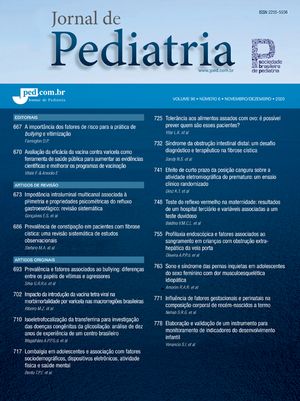
To present the most important and recent results of studies on asthma genetics. These data may help general physicians understand the impact of genetics on this complex disorder and how genes and polymorphisms influence asthma and atopy.
SourcesData were collected from MEDLINE. Genetic association studies were selected from the Genetic Association Database, which is an archive of human genetic association studies of complex diseases and disorders organized by the National Institutes of Health.
Summary of the findingsConsidering the data from several important twin studies on asthma genetics, heritability, which measures the contribution of genetic factors to the variance of asthma, may be estimated in 0.48-0.79. A huge number of genetic association studies have been trying to identify asthma susceptibility genes. The most replicated results in the genetic association studies involve the following five regions of the human genome: 5q31-32, 6p21, 11q12-13, 16p11-12, and 20p13. Only recently a new asthma susceptibility gene (ORMDL3) has been identified by a whole genome association study, considered to be a major determinant for childhood asthma.
ConclusionsGenetic contribution to asthma may be estimated ranging from 48 to 79%. Several loci seem to influence asthma susceptibility. Genes located on chromosome 5q (ADRB2, IL13 and IL4) and the recently identified ORMDL3, on chromosome 17, seem to be determinants of childhood asthma. Diagnostics and pharmacogenetics may be the first clinical implication of extensive studies on asthma genetics.
Apresentar os resultados dos estudos mais importantes e recentes sobre a genética da asma. Estes dados devem auxiliar os clínicos gerais a compreender o impacto da genética sobre este distúrbio complexo e como os genes e polimorfismos influenciam a asma e a atopia.
Fontes dos dadosOs dados foram coletados do banco de dados MEDLINE. Os estudos de associação genética foram selecionados do Genetic Association Database, um repositório de estudos de associação genética de doenças e distúrbios complexos organizado pelo National Institutes of Health.
Síntese dos dadosConsiderando os dados de diversos importantes estudos de gêmeos sobre a genética da asma, a heritabilidade, que mensura a contribuição dos fatores genéticos para a variância da asma, pode ser estimada entre 0,48 e 0,79. Uma grande quantidade de estudos de associação genética tentou identificar genes de susceptibilidade à asma. Os resultados mais replicados nos estudos de associação genética envolvem as cinco regiões do genoma humano a seguir: 5q31-32, 6p21, 11q12-13, 16p11-12, e 20p13. Recentemente, outro gene de susceptibilidade à asma (ORMDL3), considerado determinante crítico para a asma infantil, foi identificado por um estudo genômico de associação.
ConclusõesÉ possível estimar que a contribuição genética à asma varia entre 48 e 79%. Diversos loci parecem influenciar a susceptibilidade à asma. Os genes localizados no cromossomo 5q (ADRB2, IL13 e IL4) e o gene ORMDL3, no cromossomo 17, identificado recentemente, parecem ser determinantes para a asma infantil. O diagnóstico e a farmacogenética podem ser as primeiras implicações clínicas de estudos extensivos sobre a genética da asma.









